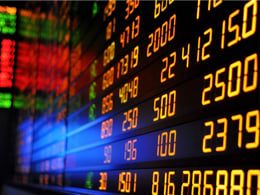 Ever since Christmas, the stock market has been trending downward, with the slide getting worse over the past week or so.
Ever since Christmas, the stock market has been trending downward, with the slide getting worse over the past week or so.
As I’ve mentioned multiple times, I generally don’t start to pay attention until we hit the 200-day moving average (which is now at around 1,966 for the S&P 500). But a couple of things have caught my notice lately.
Potentially worrisome technical factors
On several days recently, the market has opened up and closed down, suggesting that people are taking advantage of rises to sell positions.
Further, the chart for the last month or so looks like what’s called a “head and shoulders” formation—with a high, a decline and recovery to a higher high, then a decline with a recovery to a lower high, and then a decline. This is not a positive sign from a technical perspective. Another troubling factor would be if the market stays below 2,000 on the S&P 500 for several days, which it may do.
Some fundamental concerns
I’d be less worried about the technical factors if they weren’t supported by fundamental concerns. We have seen some weakening in U.S. economic reports, which, although still at healthy levels, are below what the market seems to be expecting at this point.
What’s more, there have been some significant negative developments in Europe—the pending decision by the European Central Bank on whether to launch a quantitative easing program, the pending Greek election, and the decision yesterday by the Swiss central bank to stop intervening in currency markets. All of these stories create at least a perceived risk of disruption in the near future.
Expect turbulence ahead
I still believe that the U.S. economic recovery is real and on track. But with stock markets very richly priced, rising uncertainty and declining growth expectations should lead to turbulence in the market. This is normal.
Moreover, the current decline, at around 4.75 percent as I write this, is still well within typical ranges. Nevertheless, the decline and outstanding risks suggest the situation may well get worse before it gets better.
The fundamental factors supporting the market remain in place. Bear markets historically haven't come with an improving economy and high levels of job growth like we’re seeing now. In the medium term, it’s very likely the market will continue to rise. In the shorter term, however, the risks of turbulence may be increasing.
What to do?
Personally, I’m not doing anything yet. I have my own decision rules, which I will continue to apply. Until those rules kick in, which may not even happen, I’ll sit tight.
My goal here isn’t to predict trouble but simply to raise awareness. Usual market action still explains what's going on now, but some of the events around the world do raise the risk level.
As usual, remain calm and carry on—but pay attention as well.


 Print
Print


